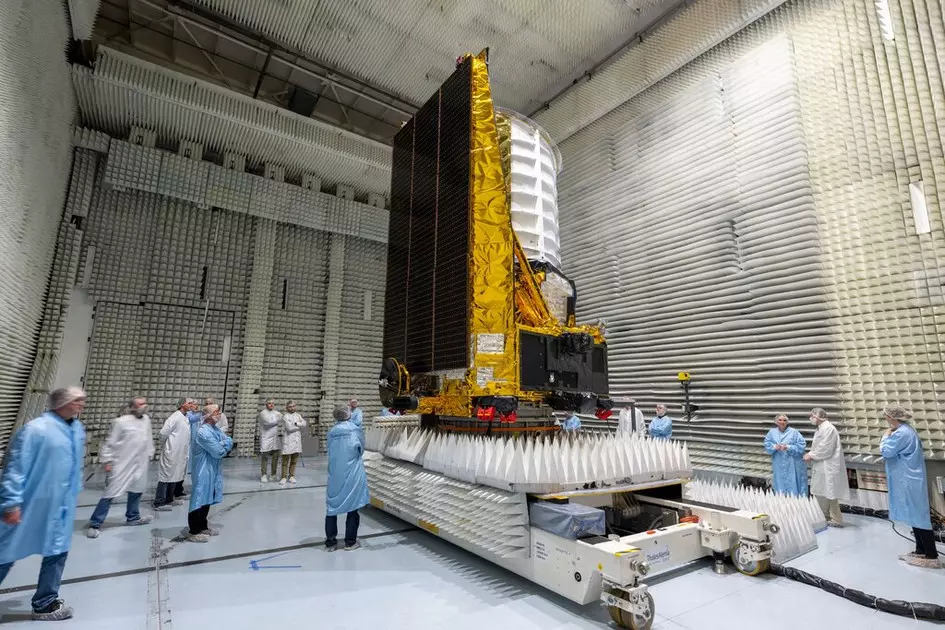Dark universe is waiting. What will the Euclid telescope reveal?
Last Saturday, the Euclid spacecraft launched into space on its mission to chart the history of our universe as far back as 10 billion years ago. The space telescope, built by the European Space Agency, will use its instruments to record more than a third of the extragalactic sky over the next six years, creating the most accurate three-dimensional map of the cosmos to date. Researchers plan to use Euclid’s map to explore how dark matter and dark energy — mysterious stuff that makes up 95 percent of our universe — have influenced what we see when we look out across space and time.;

Last Saturday, the Euclid spacecraft launched into space on its mission to chart the history of our universe as far back as 10 billion years ago. The space telescope, built by the European Space Agency, will use its instruments to record more than a third of the extragalactic sky over the next six years, creating the most accurate three-dimensional map of the cosmos to date. Researchers plan to use Euclid’s map to explore how dark matter and dark energy — mysterious stuff that makes up 95 percent of our universe — have influenced what we see when we look out across space and time.
“Euclid is coming at a really interesting time in the history of cosmology,” said Jason Rhodes, a physicist at NASA’s Jet Propulsion Laboratory who leads Euclid’s US science team. “We are entering a time when Euclid is going to be great at answering questions that are just now emerging. And I am certain that Euclid is going to be fantastic for answering questions we haven’t even thought of.”
The spacecraft lifted off from Cape Canaveral, Fla., on a SpaceX Falcon 9 rocket. The weather was almost perfect for the flight. Euclid, still attached to the rocket’s second stage, separated from its booster three minutes after launch, amid a round of applause. It entered a stable orbit around Earth nearly nine minutes after the flight. About 40 minutes later, the telescope separated from the second stage and began a journey of a million miles to a point in space where the mission’s scientific journey would begin.
“Unbelievable,” said Guadalupe Canas Herrera, a theoretical cosmologist on the Euclid mission, when asked about the launch on the ESA video stream. “I’m super emotional, but also extremely thankful for everything that has been done so far so that we can actually have a telescope in space.”
The European astrophysics mission had no choice but to fly American. ESA had planned to launch the spacecraft on either a Russian Soyuz rocket or Europe’s new Ariane 6 rocket. But because of a break in the European-Russian space relationship after the invasion of Ukraine, and delays for Ariane 6, ESA moved some launches to SpaceX, including Euclid.
The spacecraft will not be alone in peering into the cold storage of our universe. But unlike the Hubble and James Webb Space Telescopes, which focus deeply on one part of the sky at a time, scientists will use Euclid to cover wide swaths of the extragalactic sky at once. In three of the regions it records, Euclid will reach back even farther, imaging the structure of the universe about one billion years after the Big Bang. One of the space telescope’s targets is dark matter, the invisible glue of the cosmos that doesn’t emit, absorb or reflect light. Dark matter has so far evaded direct detection, despite physicists’ best efforts, but they know it exists because of its gravitational influence on the way that galaxies move.
Dark energy, on the other hand, is a much more mysterious force that pushes galaxies apart — so much so that our universe is expanding at an accelerating rate.
Euclid’s maps of the cosmos will reveal how dark matter is distributed across space-time based on how it warps the light from galaxies behind it, an effect known as weak gravitational lensing.
Miller is a journalist with NYT©2023
The New York Times

